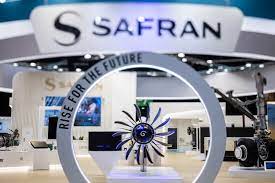
Safran Group has officially closed its $1.8 billion acquisition of Collins Aerospace’s flight control and actuation business. The deal, first announced two years ago, is now final, following regulatory clearance and strategic divestments.
This is not just another M&A headline. It marks a bold move by the French aerospace giant to reshape the flight controls landscape and to stake its claim in next-gen aircraft development.
The acquired unit, now folded into Safran Electronics & Defense, generated approximately $1.55 billion in revenue last year and supports more than 180 aircraft platforms across commercial, military, and helicopter markets. Its 4,000 employees, spread across facilities in the UK, Italy, France, and Asia, now fall under Safran Group’s expanding umbrella.
For CEO Olivier Andriès, the deal is less about expansion and more about the consolidation of expertise.
“This acquisition offers a unique opportunity to solidify our position in mission-critical flight control and actuation functions and create a global leader in this domain,” he said in a statement. “It will enable us to deliver a comprehensive offering to our customers and position us extremely well for next-generation aircraft. This business fits perfectly with both our product portfolio and our DNA with a high technology content, recurring aftermarket sales and profitable growth.”
Safran Group, already a dominant player in aircraft engines, landing gear, and braking systems, is clearly targeting greater control, literally and figuratively, over aircraft systems. By adding Collins’ hydraulic and mechanical actuation strengths to its own electromechanical and electronic expertise, the company now boasts one of the most comprehensive portfolios in the sector.
This positions the group to serve as a single-source provider for advanced flight control systems, a growing requirement as aircraft architectures evolve.
Future narrow-body aircraft will demand increased electrification and new configurations to meet decarbonization targets. These platforms need smarter, more integrated flight controls. Safran Group believes it now has the tech stack to meet that demand head-on.
The move also diversifies Safran Group’s market exposure. With assets now spread across commercial aviation, military programs, and helicopters, the company is less vulnerable to cyclical downturns in any one segment.
That kind of balance matters. Especially as geopolitical pressures and military budgets continue to shape aerospace investment.
It also complements Safran’s existing strengths in helicopter and nacelle actuation, further reinforcing its role in complex motion systems across platforms.
The deal is expected to boost the company’s earnings per share from year one, with $50 million in annual cost synergies projected by 2028. There’s also upside from aftermarket services, which already represent about 40% of revenue in the acquired business.
To finalize the deal, Safran Group divested its North American electromechanical actuation business, with $65 million in annual sales, to Woodward Inc. This was necessary to meet antitrust conditions, particularly in the U.S. defense market.
The European Commission gave its green light back in April, clearing the path for integration.
Competitively, the acquisition raises eyebrows.
By folding in Collins’ capabilities, Safran Group becomes a much larger presence in a field traditionally dominated by players like Moog, Parker-Hannifin, and BAE Systems. While the deal isn’t expected to immediately reshape procurement decisions, it does introduce a powerful new one-stop-shop option, especially attractive to OEMs developing new-generation platforms under tight timelines and environmental mandates.
Integration begins August 1. And Safran Group has its work cut out. Merging systems, cultures, and global teams isn’t simple, even with technological alignment.
But the strategic logic is strong.
With the commercial aerospace rebound in full swing, defense spending rising, and sustainability pressures reshaping aircraft architecture, timing is on Safran’s side.
This isn’t just about acquiring factories or IP. It’s about positioning the company as an essential systems partner to airframers pushing toward a net-zero future.If executed well, this acquisition could define Safran Group’s next decade. And possibly alter the balance of power in aircraft control systems for good.
Share this article: